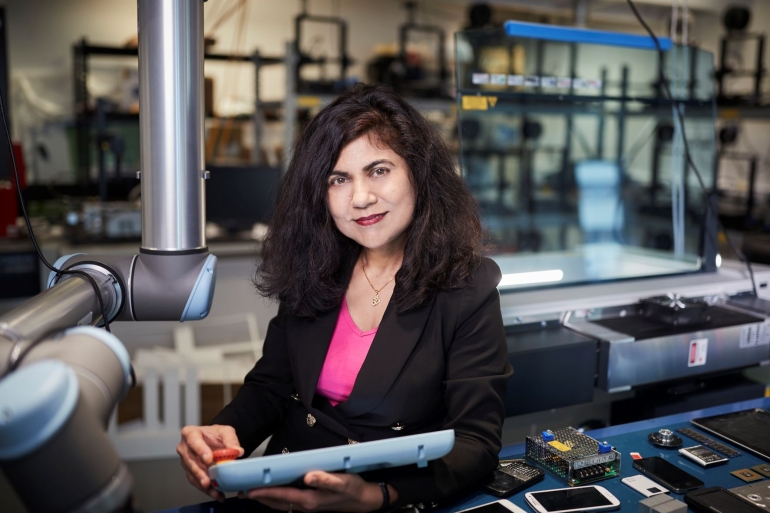Latest news
Read the latest news from the Centre for Sustainable Materials Research and Technology

Engineers Australia's Create Magazine has just published a story on the UNSW SMaRT Centre's latest 'waste to product' research and development breakthroughs.
Below is an excerpt from the online story by freelance journalist Elle Hardy:
Known for spearheading the high temperature transformation of waste to produce a new generation of ‘green’ materials, Scientia Professor Veena Sahajwalla HonFIEAust CPEng is leading a five-year research and development program that aims to transform Australia’s waste and resource recovery industry by equipping it with advanced manufacturing capability.
An Engineers Australia Honorary Fellow and Chartered engineer and Australian Research Council (ARC) Laureate, Sahajwalla is the founder and Director of the UNSW Sustainable Materials Research and Technology (SMaRT) Centre. She is also head of two new national research and industry hubs, the ARC Microrecycling Research Hub and the Sustainable Communities and Waste Hub.
As a coffee lover, one new project close to Sahajwalla’s heart is the UNSW SMaRT Centre’s research into using waste coffee grounds in SMaRT’s patented ‘green steel’ Polymer Injection Technology®.
“We’ve proven that we can use waste coffee as a source of carbon instead of coke and coal, which is needed as a reductant to make iron,” she says.
“It can also provide the element hydrogen which vastly improves the efficiency and energy required for the steel manufacturing process. Coffee is another resource which will allow us to move more and more towards decarbonisation.”
“THIS IS THE NEXT BIG THING FOR US IN THE JOURNEY OF DECARBONISATION. IT’S SO IMPORTANT THAT WE HAVE ALTERNATIVES UP OUR SLEEVE.”
In the latest research breakthroughs on SMaRT@UNSW’s Green Steel Polymer Injection Technology®, industrial trials with partner, steel maker Molycop, have shown various wastes can be used to make steel more sustainably in electric arc furnaces.
“This is not a waste, it’s a really useful resource,” she says. “It’s going to be an interesting shift towards valuing our waste resources and thinking about those innovative supply chains where recycling and manufacturing can be coupled together.”
Sahajwalla says to produce green metals, such as steel or nickel, manufacturers will ultimately need to reduce their reliance on coke and coal, which traditionally have been required to enable various chemical reactions in the furnaces.
“This is the next big thing for us in the journey of decarbonisation,” she says. “It’s so important that we have alternatives up our sleeve.”
Sahajwalla and her team have also been working to set up a Green Ceramics MICROfactorie® in partnership with Shoalhaven City Council on the south coast of New South Wales.
‘Green ceramics’ are SMaRT’s new generation of high performance, non-toxic, engineered bio-composites. They are designed for use in buildings, as furniture and ceramic tiles and for a range of architectural and decorative applications.
Products are typically made from waste glass and textiles that are either too highly contaminated or made from composite materials, rendering them difficult to recycle.
“It’s been really special,” Sahajwalla says. “We’re all on a journey together, building up local supply chains and a relationship both with the Council and with our industry partners.”
The MICROfactorie® has already begun processing and crushing waste glass.